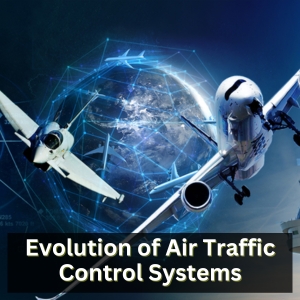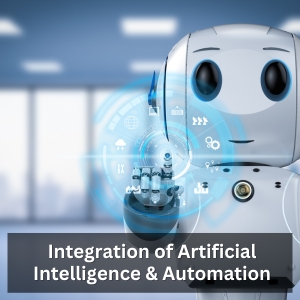Announcement
We are excited to announce the Indus Hackathon 2025, an exhilarating one-day event organized by the CSE Department of Indus University....Read more We are excited to announce the Indus Hackathon 2025, an exhilarating one-day event organized by the CSE Department of Indus University.
26th ISTE Faculty Annual State Convention will be held at Indus University on April 27, 2023....Read more 26th ISTE Faculty Annual State Convention will be held at Indus University on April 27, 2023.
26th ISTE GUJARAT STATE ANNUAL FACULTY CONVENTION & CONFERENCE ON APRIL 27,2023. MORE DETAILS WILL BE SHARED SOON....Read more 26th ISTE GUJARAT STATE ANNUAL FACULTY CONVENTION & CONFERENCE ON APRIL 27,2023. MORE DETAILS WILL BE SHARED SOON.
We are excited to announce the Indus Hackathon 2025, an exhilarating one-day event organized by the CSE Department of Indus University....Read more We are excited to announce the Indus Hackathon 2025, an exhilarating one-day event organized by the CSE Department of Indus University.
26th ISTE Faculty Annual State Convention will be held at Indus University on April 27, 2023....Read more 26th ISTE Faculty Annual State Convention will be held at Indus University on April 27, 2023.
26th ISTE GUJARAT STATE ANNUAL FACULTY CONVENTION & CONFERENCE ON APRIL 27,2023. MORE DETAILS WILL BE SHARED SOON....Read more 26th ISTE GUJARAT STATE ANNUAL FACULTY CONVENTION & CONFERENCE ON APRIL 27,2023. MORE DETAILS WILL BE SHARED SOON.

Air traffic management (ATM) is critical in aviation, ensuring safe and efficient aircraft movement in the skies. With the growing number of flights, improving the safety and effectiveness of air traffic control systems and technology has become critical and so is education. Effective air traffic management minimizes the possibility of accidents and incidents while optimizing airspace use, lowering delays, and increasing overall operating efficiency.
Air traffic control systems have advanced substantially from manual to sophisticated automated systems. Air traffic control in the early days depended on manual communication and coordination between controllers and pilots. However, these systems faced capacity and efficiency restrictions as air traffic increased. Because of the necessity for advancement, radar systems for aircraft surveillance and ground-based communication systems were developed.
Key milestones and advancements have propelled the evolution of air traffic control technology so institutes of AME courses are implementing this as well. Introducing Mode S transponders and secondary surveillance radar (SSR) enhanced aircraft identification and tracking capabilities. Additionally, adopting data link communications facilitated more efficient and reliable information exchange between controllers and pilots.

The basic goal of air traffic management systems is to ensure safety. Advanced collision avoidance technologies have been created to reduce the likelihood of mid-air crashes. When possible conflicts emerge, traffic warning and collision avoidance systems (TCAS) employ aircraft transponder data to offer pilots timely alerts and resolution advisories. Ground-based radar systems like primary surveillance radar (PSR) and secondary surveillance radar (SSR) allow controllers to monitor and track aircraft positions more accurately. Aircraft engineering courses make students learn these safety measures in the curriculum.
Communication protocols have also improved to enhance safety in air traffic management. Implementing standardized phraseology, such as the International Civil Aviation Organization (ICAO), promotes transparent and effective communication between controllers and pilots. Additionally, using digital communication systems, such as Controller-Pilot Data Link Communications (CPDLC), reduces the risk of miscommunication and enhances the accuracy of information exchange.
These safety measures significantly prevent accidents and incidents in air traffic management. By providing real-time situational awareness, facilitating timely interventions, and improving communication, these advancements ensure higher safety for aircraft operations.

With increasing aviation traffic, enhancing efficiency & capacity in air traffic management and aircraft maintenance has become critical. Congestion, delays, and the need for more efficient use of airspace are among the issues of rising air traffic. Various technologies have been developed and implemented to enhance aircraft maintenance.
Satellite-based navigation systems, such as the Global Positioning System (GPS), are one crucial technology revolutionizing air traffic management. GPS provides more accurate aircraft routing by giving precise and dependable positional information, minimizing reliance on ground-based navigation systems. This enables more efficient airspace usage, shorter flight paths, and lower fuel consumption and emissions.
Data connection communications have also contributed significantly to increased efficiency. These technologies allow for the direct transmission of digital data between aircraft and air traffic control, removing the necessity for vocal contact and lowering the possibility of misinterpretation. Clearances, instructions, and other vital information can be transmitted digitally using data link connections, resulting in faster and more accurate information transfer. This adds to smoother operations, less workload for controllers, and increased air traffic management efficiency.
Automation in air traffic control systems is becoming increasingly frequent, enhancing efficiency and eliminating human errors. AI is crucial in automating various aspects of air traffic control. AI programs can assess enormous volumes of data, assist with flight planning, and make decisions. AI systems, for example, can improve flight trajectories by considering meteorological conditions, air traffic congestion, and fuel efficiency. AI improves efficiency by automating repetitive tasks and providing intelligent decision assistance in air traffic control operations.
Incorporating artificial intelligence (AI) and automation in air traffic control has transformed the industry. AI applications are used in various fields, including flight planning, weather prediction, and decision-making processes. AI algorithms can develop optimized flight plans that minimize fuel consumption, shorten flying times, and increase efficiency by analyzing historical data and real-time information. Learning the AI application in aircraft maintenance has become necessary and AME course needs to add this to their curriculum.
Automation in air traffic control systems also lowers human error and increases operational effectiveness. Automated systems can reliably and precisely complete regular activities like tracking and monitoring aircraft. Air traffic controllers can manage more air traffic because they have more time to concentrate on essential decision-making responsibilities. Automation also improves data interchange between controllers and pilots and reduces communication errors, contributing to more efficient operations and improved security.


Collaborative decision-making and digitalization are two concepts driving modern organizations toward enhanced efficiency and innovation. By leveraging digital tools and platforms, teams can seamlessly collaborate, share insights, and make informed decisions collectively. Digitalization facilitates real-time data analysis, improving the accuracy and speed of decision-making processes. It enables cross-functional collaboration, breaking down silos and fostering a culture of inclusivity. With collaborative decision-making and digitalization, organizations can tap into the collective intelligence of their workforce, leading to more effective problem-solving, increased productivity, and better outcomes in today's rapidly evolving digital landscape. There are many aircraft engineering colleges in India focusing on these in their curriculum of aircraft maintenance courses.
The field of air traffic management and aircraft maintenance is continuously evolving, driven by technological advancements and changing demands. Two emerging areas of development are remote tower operations and unmanned aerial systems (drones). Remote tower operations involve using advanced camera and sensor technologies to enable air traffic controllers to monitor and control multiple airports from a centralized location remotely. This concept offers potential benefits regarding cost savings, flexibility, and increased efficiency. However, challenges such as ensuring reliable communication links, addressing cybersecurity concerns, and overcoming regulatory hurdles must be addressed for successful implementation.
Unmanned aerial systems, or drones, are also gaining popularity in aviation. Drones can transform numerous parts of air traffic management, such as package delivery, surveillance, and inspections. However, integrating drones into current airspace systems offers safety, traffic management, and legislation issues. It is critical for safely and effectively integrating drones into the airspace to develop robust collision avoidance technologies, set clear regulations, and design efficient drone traffic management systems.
Finally, advancements in air traffic control systems and technologies have considerably improved air traffic management safety and efficiency. To meet the changing demands of the future, the aviation sector has enhanced different courses for aviation and aircraft maintenance such as B.Tech in aircraft management engineering. The industry can maintain a seamless and sustainable air transportation system for years by prioritizing safety, efficiency, and technological innovation.